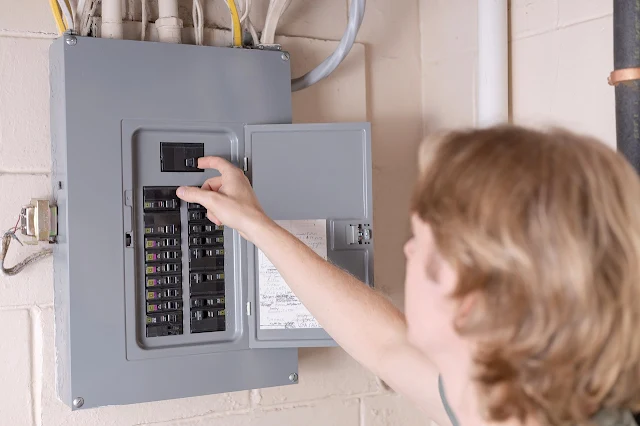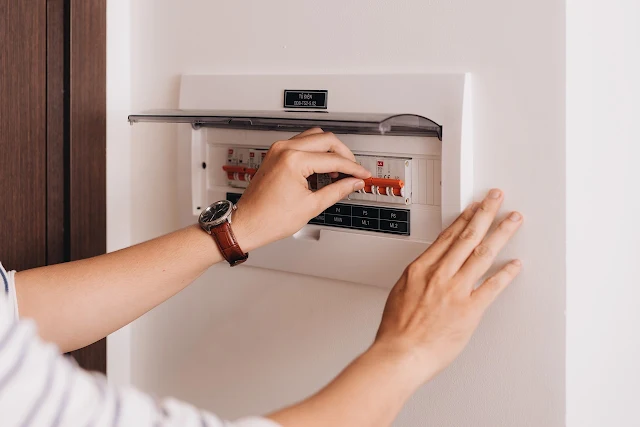Ad Code
Translate
List of 6,000+ Dofollow Commentluv Blogs FREE (Updated 2025)
January 16, 2025
What is Ozempic (semaglutide)? (Updated in 2025)
January 30, 2025
How To Find Suitable Properties In Cyprus? (Updated in 2025)
January 11, 2025
DStv Packages in South Africa, channels and prices comparison for 2025
February 21, 2025
Smart strategies for trading on crypto exchanges
February 18, 2025
Understanding Circuit Protection: 5 Basics Every Homeowner Should Know
Zizo Gala-Mkhize
March 13, 2024
Electrical hazards like fires and shocks can happen in homes without proper circuit protection. You don’t want to experience the devastating impact a house fire could have on your family and belongings. Understanding how your circuits are protected will protect your home and prevent electrical hazards.
Keep reading to learn the circuit protection basics every homeowner needs to know. From identifying short circuits to maintaining ground fault protection, this guide covers vital information to help you proactively address electrical hazards and ensure a safe home environment for your family.
Why Is It Important For Circuit Protection?
Electricity is beneficial but can also be dangerous if not handled properly. Too much current flowing through a wire can cause it to overheat, melt its insulation, and potentially start a fire. Circuit protection equipment intervenes when this happens, preventing these dangerous situations.
There are two main culprits for excessive current:
- Overload - Occurs when the electrical demand on a circuit surpasses its rated capacity, like trying to funnel a river through a garden hose.
- Short Circuit—A short circuit is a direct, unintended connection between a circuit's "live" and "neutral" wires. Think of a broken pipe where water bypasses the intended path and spills everywhere. A short circuit can cause a sudden surge of current.
The Essential Protectors
Two essential safeguards within a residence's electrical system function as the first defense against potentially hazardous situations: fuses and circuit breakers.
Fuses
Fuses contain a metal wire that melts when too much electricity flows through it. This stops the electricity and prevents overheating or fire. After melting, the fuse needs to be replaced. They provide a simple, cost-effective way to protect electrical circuits from excessive current.
Circuit Breakers
Circuit breakers have a metal strip that bends when too much electricity flows through them or when they get too hot. This bending trips a switch, stopping the electricity flow. After fixing the problem, circuit breakers can be reset by flipping the switch. They are particularly well-suited for residential electrical systems due to their automatic tripping mechanism.
5 Basics Every Homeowner Should Know
These five vital circuit protection basics every homeowner should master to safeguard against electrical hazards and ensure home safety.
1. Overload Protection
Too many electrical devices are sometimes plugged into one circuit, or a faulty device uses more electricity than it should. This overload can cause wires to overheat and start fires. Circuit breakers and fuses detect this overload and shut off the electricity to prevent danger.
2. Short Circuit Protection
A short circuit happens when electricity takes an unplanned shortcut instead of following its proper path. This causes an unsafe rush of too much electric current. Short circuits are dangerous because the excessive electricity makes wires become extremely hot and spark, which could start a fire.
To prevent this hazard, circuit breakers and fuses rapidly cut off the flow of electricity when a short circuit occurs. Repairing damaged wiring or replacing faulty devices can stop short circuits from happening in the first place.
3. Ground Fault Protection
Ground faults occur when an energized conductor meets an unintended grounding path. This can cause electric shocks. Special outlets called GFCIs detect even tiny ground faults and cut off power to prevent shocks. GFCIs are required in bathrooms, kitchens, and outdoor areas where water is present.
4. Arc Fault Protection
Arc faults are caused by damaged wires sparking or arcing. This can happen with old, worn wiring. The sparks from arc faults might ignite nearby materials and start fires. AFCIs can sense arcing and stop the electricity flow to prevent arc fault fires. AFCIs are often installed in living spaces.
5. Maintenance
Circuit protection devices need to be checked regularly. Homeowners should inspect electrical panels for damage, test GFCI and AFCI outlets, and replace old devices. A professional electrician should periodically inspect your home’s electrical circuits to ensure they operate within safe capacity.
Tips For Staying Within Circuit’s Capacity
Here are some tips for staying within your circuit's capacity:
- Know the circuit's amperage rating. Every electrical circuit has a maximum amount of electric current it can safely handle. This limit is called the amperage rating, and it's essential to understand this number for each circuit in your home or workplace.
- Don't overload outlets or circuits. Only plug a few electrical devices into a single receptacle or circuit. Too many devices drawing power can exceed the circuit's amperage capacity.
- Use proper wiring size. Thicker wires can safely carry more electric current. Ensure the wiring for each circuit matches the circuit's amperage rating and expected power needs.
- Avoid old or damaged wiring. Over time, wires can degrade or get damaged, reducing their ability to handle electrical loads safely. Replace any wiring that seems old, frayed, or compromised.
- Only run a few high-power appliances simultaneously. Large appliances like air conditioners, ovens, and clothes dryers require a lot of electricity. Avoid running multiple high-power devices on the same circuit at once.
Conclusion
Homeowners must prioritize electrical safety by familiarizing themselves with circuit protection basics. They should also regularly inspect and maintain devices like circuit breakers, fuses, GFCIs, and AFCIs to ensure they function correctly.
Avoid overloading circuits, replace old wiring, and hire professionals for complex electrical work. Taking these precautions can provide peace of mind and protect your family and property from the potentially devastating consequences of electrical hazards.
Author Bio: John Smith is an electrical safety enthusiast dedicated to raising awareness about the importance of circuit protection. With years of hands-on experience, he shares practical insights to help homeowners create a safe and secure living environment. John's passion lies in empowering individuals to take proactive steps toward electrical safety.
Featured Post
12 Prominent new technologies and trends emerging in 2024
Khabza Mkhize-
February 27, 2025
Sister Sites
Most Popular
List of 6,000+ Dofollow Commentluv Blogs FREE (Updated 2025)
January 16, 2025
Smart strategies for trading on crypto exchanges
February 18, 2025
Popular posts
List of 6,000+ Dofollow Commentluv Blogs FREE (Updated 2025)
January 16, 2025
Smart strategies for trading on crypto exchanges
February 18, 2025
iThonga Soapie Teasers on Mzansi Magic- March 2025
March 07, 2025
Footer Menu Widget
Created By Blogspot Theme | Distributed By Gooyaabi Templates



0 Comments